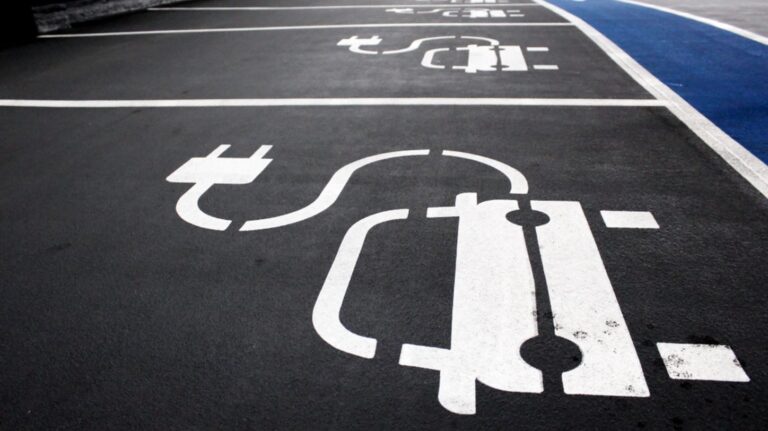The green transition is happening too slowly. There is a climate emergency and it is clear that we need to reduce greenhouse gas emissions by transitioning to more sustainable transportation.
However, without sufficient infrastructure to enable electric vehicles (EVs) or cycling for commuting, these options will remain too inconvenient or unsafe for most. Canada’s climate obligations will not be met without these infrastructure changes.
We just experienced the hottest July on record. We cannot burn more carbon, no matter the remaining carbon budget. Climate disasters around the world today are dictating timelines now. Meanwhile, gas cars are needlessly on city streets, adding to traffic congestion and pollution while urban sprawl means gas car driving habits expand.
Canada requires urgent investment in transport infrastructure and incentives to reverse this trend.
Policy breakdowns
Here in Toronto, a recent mayoral election provided a platform for two candidates who made election promises to close down cycling lanes. Meanwhile, a lack of high-quality cycling infrastructure in the city incentivises travel by car to the detriment of the city’s happiness and carbon budget.
This stands in stark contrast to a city like Copenhagen, Denmark where 62% of people commute by cycling. A city which, by some metrics, may also be the happiest in the world.
Closer to home, cycling infrastructure remains poor and bike theft rose by 429% in Canada this summer. However, the solutions to this problem, such as bicycle lockers, are not widely enough installed and where they do exist, they are only for regular users and require a reservation and monthly payments.
Solutions such as an on-demand bicycle storage system being piloted in Vancouver and the Vancouver City Centre Bike Valet show promise for nation-wide implementation but will require effort to implement at scale.
Nowhere to charge
Likewise, a recent survey says that Canadians are not switching to cleaner EVs partly because of a lack of charging infrastructure. In a climate emergency, bike and electric vehicle infrastructure should have been installed long ago.
Toronto’s mandate is to reach net zero by 2040, but its efforts pale in comparison to the actions of other cities in Canada and around the world.
A variety of incentives and legislation are accelerating an EV transition including fee exemptions, grants and mandated targets. Brazil is proposing that all gas stations offer EV charging.
Ireland’s zero emissions office is aiming for 100% of new car sales to be EVs by 2030. France supports EV purchases with funding and bonuses for low income individuals. Ecuador’s public transport will be 100% electric by 2025 and Sweden’s government fleet will be electrified by 2035. Colombia and South Africa are setting EV charging infrastructure minimums.
There are notable Canadian EV initiatives in Québec and British Columbia (BC). Québec has ambitious electrification plans including expanding EV charging, funding further vehicle electrification across the province. BC is improving upon the Canadian national mandate by installing more EV charging stations and planning a changeover to clean vehicles.
In contrast, Ontario and Toronto are without any unique innovations in electric vehicle infrastructure or policy.
An electric future
EVs are already addressing local air pollution around the world and reducing health issues such as asthma. Higher EV sales are also associated with higher human development indexes (HDI). An HDI is a national measure of wealth, and a good reflection of standard of living, including health and education. Countries with higher EV sales also tend to lead worldwide in the development of environmental inventions. Healthier inventions make a better life.
Perhaps in Sweden, France, The Netherlands, Germany, Japan, Norway and certain Canadian provinces such as Québec and BC, the connection is clearer between switching to cleaner technologies and increasing levels of personal health and happiness. Improving education is a catalyst for change.
If Canada is to meet its climate commitments, it has to drastically reduce greenhouse gas emissions from transportation. Infrastructure investments, such as for EVs and cycling, improve our quality of life and the economy at the same time. Building infrastructure is a classic approach to boosting an economy. It is also a green economic opportunity if the right choices are made.
Canada can start by applying well-known policy solutions and rapidly installing infrastructure nationwide. Studies have validated this recommendation and additional phased-in electrical grid capacity is neither controversial nor impractical. Emissions reductions with EVs as compared to gas cars, no matter the energy fuel source, ultimately validate EVs green utility over gas powered cars.
Around the world, such as in China where they have energy mix variations across regions including coal, EVs make sense. Emissions reductions for Ontario have been calculated at around 80% when EVs are driven.
The International Energy Agency offers a comprehensive policy database of worldwide examples for places like Toronto that are lagging on clean transportation transition policy and change. Beyond benchmarking, Canada could strive for leadership on the world stage by investing in university research and applying ambitious initiatives across the country.
Canada has an opportunity that should not be missed to stimulate its economy by investing in sustainable transportation infrastructure to accelerate the green transition.![]()
This article was authored by Deborah de Lange, associate professor of global management studies, Toronto Metropolitan University. It is republished from The Conversation under a Creative Commons license. Read the original article.





